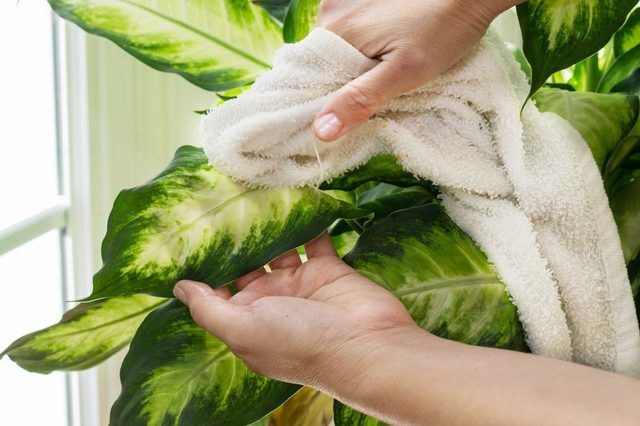Bulbs
Flower Basics
Flower Beds & Specialty Gardens
Flower Garden
Garden Furniture
Garden Gnomes
Garden Seeds
Garden Sheds
Garden Statues
Garden Tools & Supplies
Gardening Basics
Green & Organic
Groundcovers & Vines
Growing Annuals
Growing Basil
Growing Beans
Growing Berries
Growing Blueberries
Growing Cactus
Growing Corn
Growing Cotton
Growing Edibles
Growing Flowers
Growing Garlic
Growing Grapes
Growing Grass
Growing Herbs
Growing Jasmine
Growing Mint
Growing Mushrooms
Orchids
Growing Peanuts
Growing Perennials
Growing Plants
Growing Rosemary
Growing Roses
Growing Strawberries
Growing Sunflowers
Growing Thyme
Growing Tomatoes
Growing Tulips
Growing Vegetables
Herb Basics
Herb Garden
Indoor Growing
Landscaping Basics
Landscaping Patios
Landscaping Plants
Landscaping Shrubs
Landscaping Trees
Landscaping Walks & Pathways
Lawn Basics
Lawn Maintenance
Lawn Mowers
Lawn Ornaments
Lawn Planting
Lawn Tools
Outdoor Growing
Overall Landscape Planning
Pests, Weeds & Problems
Plant Basics
Rock Garden
Rose Garden
Shrubs
Soil
Specialty Gardens
Trees
Vegetable Garden
Yard Maintenance
How to Care for Dieffenbachia
How to Care for Dieffenbachia. Dieffenbachia (Dieffenbachia seguine, formerly Dieffenbachia picta and Dieffenbachia maculate) offers gardeners a striking foliage payoff for a minimal investment of care. Whether it’s grown outside in its perennial range across U.S. Department of Agriculture plant hardiness zones 10 through 12 or indoors,...
Dieffenbachia (Dieffenbachia seguine, formerly Dieffenbachia picta and Dieffenbachia maculate) offers gardeners a striking foliage payoff for a minimal investment of care. Whether it’s grown outside in its perennial range across U.S. Department of Agriculture plant hardiness zones 10 through 12 or indoors, dieffenbachia should be kept out of the reach of children and pets because of its toxic sap.
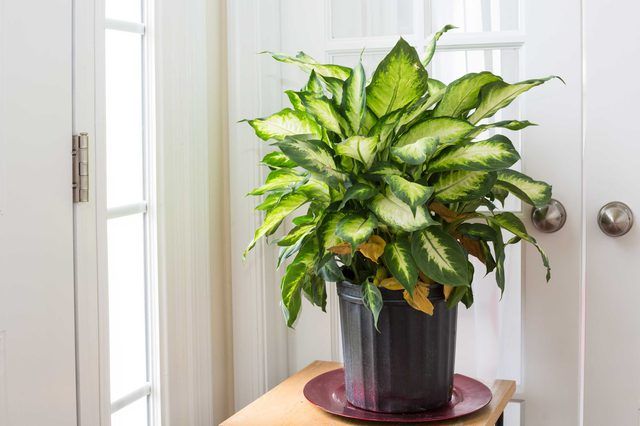
Because dieffenbachia is native to tropical climates, it prospers in moist soil and a moist atmosphere, which may be a bit challenging to provide in dry homes. Water typically evaporates quickly from dieffenbachia’s large leaves, so keeping the soil moist – but not waterlogged – helps keep a plant hydrated. Only the soil’s surface should dry to the touch before you water the plant again, and generally you can cut back on watering during fall and winter. Increase the humidity by grouping several plants together or by placing a plant's pot on top of pebbles in a water-filled tray.
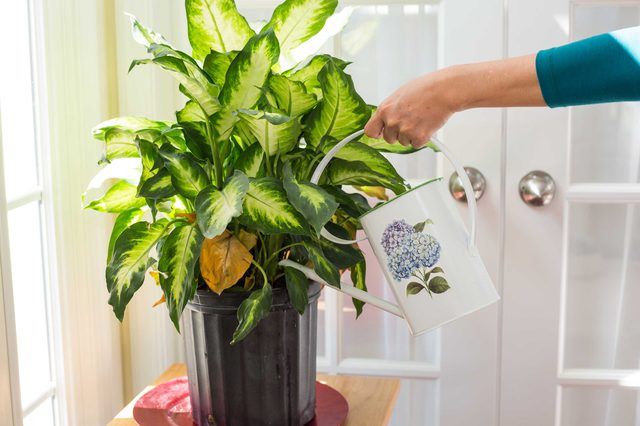
Dieffenbachia is considered a heavy feeder, but giving it too much fertilizer can cause the tips of its leaves to burn. When the plant takes up nutrients from the soil, any excess salts in the fertilizer beyond what the plant can use are carried with water to the tips of leaves. The water weeps out of the leaf tips and leaves the salt behind when it evaporates. This salty residue is what burns the leaf tips. Fertilize with 20-20-20 only every four to six weeks when dieffenbachia is actively growing, and withhold fertilizer when its growth slows or stops, commonly is during the cooler months of fall and winter. Typically, you mix 2 teaspoons of 20-20-20 fertilizer in 1 gallon of water. Water bedding plants with the dissolved fertilizer at the rate of 1 quart per square foot and container plants until the excess water drains from the drainage holes.
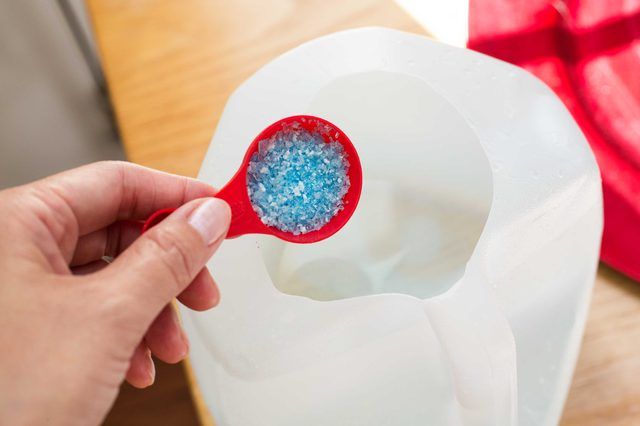
Shorter varieties of dieffenbachia may not need pruning, but taller plants tend to get leggy because of the natural loss of their lower leaves. If you want a bushier plant, prune dieffenbachia by cutting it back anywhere along its canelike stem. If the plant has lost many of its lower leaves, prune it back to a 6-inch stem. New growth will arise below the cut to rejuvenate the plant. For quicker regrowth, pruning is best during times when dieffenbachia is actively growing. "Dumb cane" is dieffenbachia’s common name because its toxic sap can irritate and inflame the mouth and vocal chords of people and pets. Wear gloves while pruning because the sap may also cause itchy skin. Disinfect pruning tools by soaking them for five minutes in a solution of 1 part household pine-oil cleaner and 3 parts water. Rinse tools before using them on plants.
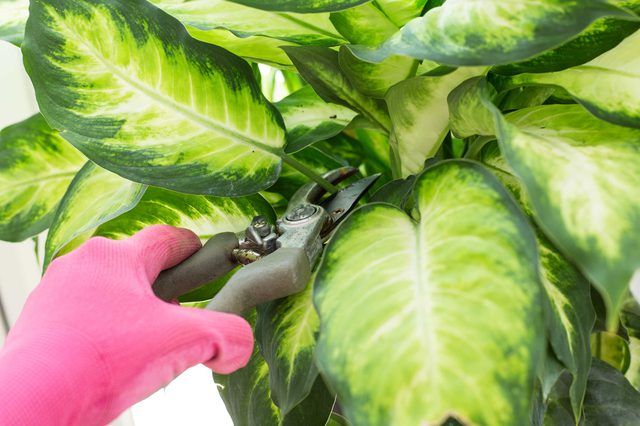
Most problems with this plant are caused by cultural influences, such as improper watering or excessive fertilizing. Dieffenbachia prospers in indirect light; direct sun may burn its leaves. Plants are typically not plagued by pests or disease. Sap-sucking pests such as aphids, spider mites and mealybugs may be occasionally bothersome. Because insecticidal soap is too harsh for dieffenbachia, dislodge insect pests with a stream of water and wipe leaves every few weeks with a damp cloth to keep pests at bay.
